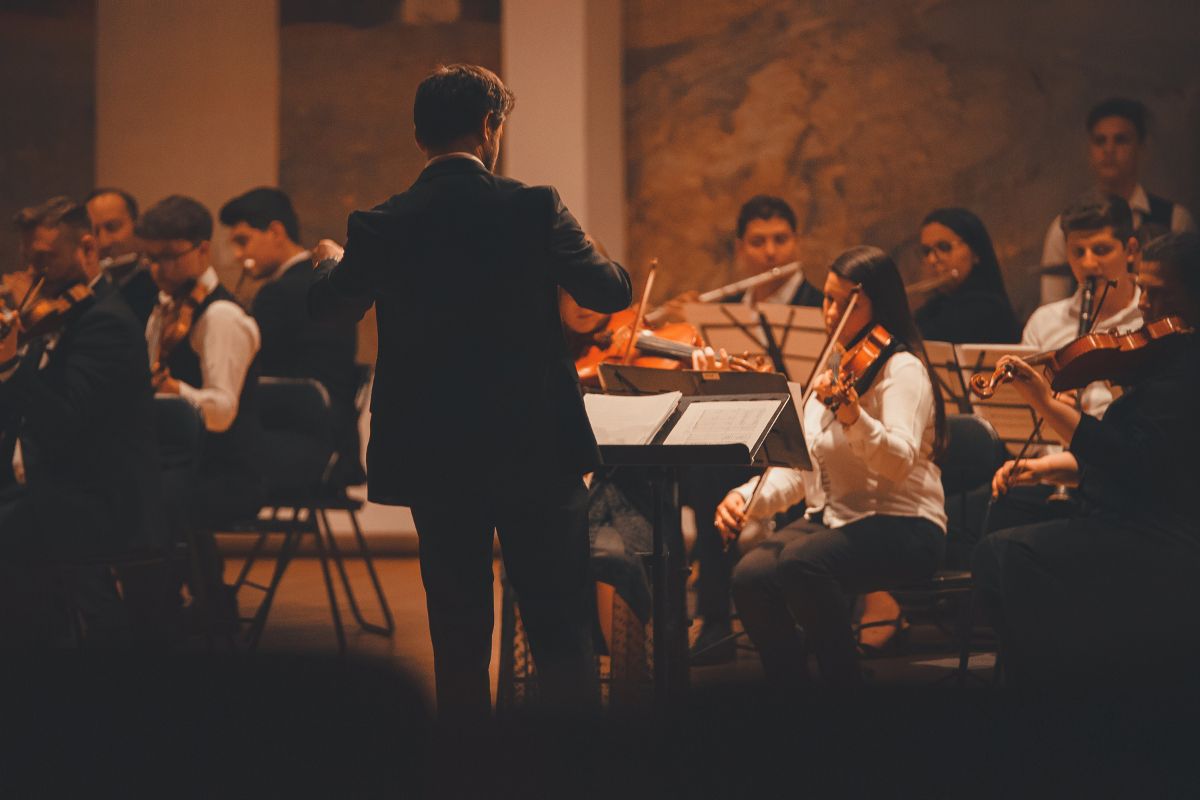The role of a music conductor extends far beyond what meets the eye, cues, and gestures; it entails knowledge in musical theory, leadership namely to handle such a group of talented performers. As a result, education is coupled with experience as aspiring conductors find their way through both formal teaching and practical training while also refining points of leadership and artistic expression.
What Is A Music Conductor?
A music conductor is a well-trained musician who has a deep knowledge of musical theory and is able to guide and control the different groups of musicians in performing. However, beyond the charisma of an orator on the platform, a music conductor has a huge influence on how a musical composition is interpreted and performed.
The conductor is the mediating factor, which ensures that the different voices within the orchestra do not run counter to each other but rather fuse together into a unified sound. Without this unifying power, the end product may only be chaos made of discordant elements as opposed to a work of coordinated harmonies.
A vital role of a conductor is to establish and hold the tempo for any musical composition. The conductor’s gestures—usually accompanied by a baton—give the visual symbol of speed and rhythm wanted. This is the key to keeping all ensemble members in sync to avoid differences that, if musicians were left on their own, depending entirely on their personal interpretation of tempo could arise.
Without the direction of a conductor, it might be difficult for musicians to coincide their entrances, which would result in disruptions and disharmony in the ensemble. There is a coordinating function that occurs when the conductor orchestrates each section with precision, ensuring its smooth flow and cohesive fabric.
How to Be a Conductor?
One of the most important aspects of training to become a conductor is mastery of at least one or more musical instruments. This knowledge provides conductors with a base for communication with musicians, enables them to interpret the nuances of musical language, and build relationships with the ensemble.
1. Formal Education
A music four-year university degree provides knowledge of musical theory, art history, and practical training. Along with this, a significant number of the conductors study for higher degrees such as master’s or doctorate to perfect their talent. Formal education lays the groundwork for conducting techniques, score reading, and the broader context of orchestral compositions.
2. Gaining Hands-on Experience in an Orchestra
Through active members of an ensemble, the motivation for those aiming to be conductors learn indispensable lessons about orchestral dynamics. Observing conductors in action, understanding what signs and gestures they use, and seeing how orchestras are arranged help a conductor get the desired skills.
3. Mentorship
Seasoned conductors can pass on information, give personal touches, and afford real-life practice for young conductors. A mentor-mentee relationship can offer practical experience, direct exposure to different conducting styles, and helpful critiques of one’s conducting capabilities.
Duties and Responsibilities of a Music Conductor
The conductor is the pilot who decides what the composer means and gestures or cues that he or she wants musicians to follow. Here is a list that includes the different duties and responsibilities of a music conductor:
- Guiding members of the orchestra during live performances by controlling the music's tempo and dynamics.
- Leading members of the orchestra and hosting rehearsal sessions to prepare for performances.
- Interpreting the musical score and conveying directions to the orchestra with gestures and cues.
- Providing feedback to individual members of the orchestra to ensure everyone performs well together.
- Guiding musicians and providing encouragement throughout their performance.
- Helping venue administrators coordinate lighting and logistical details to suit the music.
- Promoting unity among the orchestra’s members.
- Adjusting the volume to achieve a balanced sound in the performance space as necessary.
- Supporting the ensemble or soloists with entrances and coordination during performances.
- Conducting auditions when new musicians apply to join the orchestra.
- Determining which instruments to include based on the music the orchestra is going to play.
- Supervising rehearsals, directing the rehearsal schedule, and stipulating the number of practice hours expected from the musicians.
- Preparing and reviewing sheet music, ensuring performers receive it well in advance of rehearsals.
- Providing constructive feedback to performers, encouraging continuous improvement and excellence in musical execution.
Conductor's Tools
1. Baton
The baton may be considered to be the ultimate tool of a conductor. It acts as an elongated arm for the conductor, enabling direct and observable contact with the orchestra. Through brief movements and standardized conducting patterns, the baton helps indicate the tempo, provide cues, and highlight interpretative details.
2. Coat
Its adherence to specific occasions, such as evening performances, reflects the conductor's respect for tradition and the cultural context of classical music.
3. Music Sheet Stand
Positioned on the podium, it holds the conductor's score – a comprehensive document containing notations for all instruments in the ensemble. This unassuming tool allows conductors to read and interpret intricate musical scores with precision, facilitating effective communication of tempo changes, dynamics, and expressive nuances to the orchestra.
Product Recommendations:
Conclusion
Aspiring conductors, equipped with a profound appreciation for the significance of their role and the supportive tools at their disposal, are poised to lead orchestras toward harmonious crescendos, creating musical masterpieces that endure through time.



1 comment
Hello is me Joel I like to be a music director and conductor delete the la I want to be a poser and water and conductor that’s half me to make my career as a conductor please